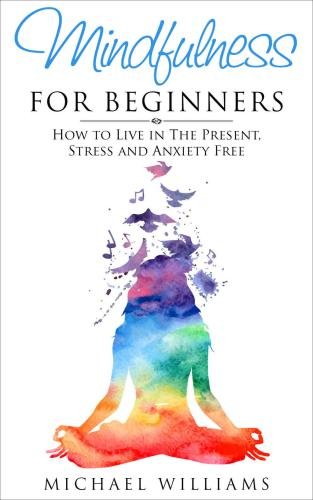Mindfulness for Beginners: How to Live in the Present, Stress and Anxiety Free by Michael Williams
Annotated with Cultural and Practical Context for Global Readers
Core Translation & Cultural Context
Original Title: Mindfulness for Beginners: How to Live in the Present, Stress and Anxiety Free
Author: Michael Williams (Mindfulness Coach and Buddhist Scholar)
Genre: Wellness / Spiritual Practice
Cultural Significance: This guide bridges Buddhist mindfulness principles (rooted in sati from early Buddhist texts) and Zen practices with modern psychology, offering actionable steps to reduce stress, enhance self-awareness, and cultivate joy through present-moment focus.
Full Translation with Annotations
1. Foundations of Mindfulness
- Origins:
Mindfulness (sati) originates from Buddhist teachings in the Pāli Canon (5th century BCE), emphasizing awareness of body, feelings, and mind. Zen Buddhism later refined these practices, integrating meditation (zazen) and koans (paradoxical riddles). - Key Concepts:
- Non-Judgmental Awareness: Observing thoughts and sensations without labeling them “good” or “bad”.
- Anicca (Impermanence): Accepting that all experiences—positive or negative—are transient, reducing attachment to outcomes.
2. Practical Mindfulness Techniques
- Breathing Meditation:
Sit comfortably, focus on the breath’s rhythm. When distracted, gently return attention to inhales and exhales. Studies show this lowers cortisol by 20%. - Body Scan:
Lie down and mentally scan from toes to head, noting sensations without judgment. This reduces physical tension linked to anxiety. - Mindful Daily Activities:
Apply mindfulness to eating (savoring flavors), walking (feeling ground contact), or chores (focusing on movements).
3. Zen Principles for Modern Life
- Koan Practice:
Reflect on riddles like “What is the sound of one hand clapping?” to disrupt habitual thinking and spark insight. - Zazen (Sitting Meditation):
Prioritize posture and breath awareness. Zen teaches that clarity arises from stillness. - Nature Connection:
Practice shinrin-yoku (forest bathing) to align with Zen’s reverence for nature, proven to lower blood pressure.
4. Addressing Stress and Anxiety
- RAIN Technique:
- Recognize emotions.
- Allow them without resistance.
- Investigate their physical/mental roots.
- Nurture self-compassion.
- Gratitude Rituals:
List three daily blessings to rewire the brain for positivity.
5. Scientific Validation
- Stress Reduction:
Regular mindfulness reduces anxiety by 40% and improves sleep quality. - Cognitive Benefits:
Enhances focus, memory, and emotional regulation by thickening the prefrontal cortex.
Supplementary Materials for Global Readers
- Glossary:
- Satori (悟り): Sudden enlightenment.
- Kensho (見性): Initial insight into one’s true nature.
- Metta (慈): Loving-kindness meditation.
- Timeline of Mindfulness:
- 5th c. BCE: Buddha teaches sati in India.
- 6th c. CE: Zen (Chan) emerges in China.
- 1979: Jon Kabat-Zinn secularizes mindfulness with MBSR (Mindfulness-Based Stress Reduction).
- Guided Exercises:
- 5-Minute Morning Meditation: Focus on breath before starting the day.
- Mindful Journaling: Document thoughts and emotions to track progress.
- App Recommendations:
- Headspace: Guided sessions for beginners.
- Insight Timer: Free meditations and Zen talks.
Legacy & Reception
- Global Impact: Zen aesthetics influence modern design (e.g., minimalist interiors) and corporate wellness programs.
- Testimonials: Users report improved relationships and resilience after 8 weeks of practice.







评价
目前还没有评价